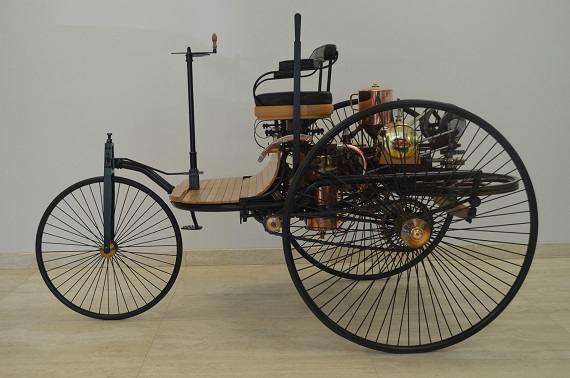Looking around today’s world, it’s hard to imagine what the next “big thing” might be. Is it Elon Musk’s re-imaging of the entire automobile industry or efforts like his and Richard Branson’s efforts to bring humanity towards Space? Perhaps it’s something much smaller, such as the recent proliferation of drones and smartphones. One thing is for certain; head back to 1880, and it would have been hard to imagine what the three competing inventors in Stuttgart would have produced in a short time. When the first production automobile was unveiled to the public, it was – in fact – far from a guarantee of propulsion. The number of hurdles which Benz and others had to leap in order to create the car boggles the mind. Two recent programs bring this to light; Drive recently did a special on Germany where they highlighted Bertha Benz – the real power behind Karl Benz’s invention – and her 120 mile drive to her home village from Mannheim. The other was a classic race undertaken by Wayne Carini on Chasing Classic Cars when he drove in the Veteran Car Run from London to Brighton. That was significant for a few reasons; it commemorates the ruling that so-called “light locomotives” (read: cars) no longer had to be preceded by a man walking and waving a flag to alert motorists, capping their speed ostensibly at 4 m.p.h.. This ruling took place in 1896, a full decade after the car was introduced – and to commemorate, a few motorists sped along at 14 m.p.h. – the new limit – for the 60-odd mile run with a few light slopes to the seaside community of Brighton. Mr. Carini’s journey didn’t go particularly smoothly, suffering multiple breakdowns and even with full support of a team of mechanics, they couldn’t ultimately make it. It highlighted how far cars have come, but underscored even more greatly the achievement of Bertha Benz, who drove with her two sons in what was an even more primitive design over a distance twice as far as Carini. There was no support team. Not only that, there was no anything – no mechanics, no service stations or gas stations, no cell phones, no navigation. Mrs. Benz needed to repair the car herself, and along the way managed to unintentionally create brake linings and reportedly also suggested the first multi-gearbox to assist in climbing some steep hills, since apparently children had to push her up some slopes. With no gas stations – and, in reality no gasoline, either – Mrs. Benz stopped at the local drug stores to pick up turpentine to feed her husband’s creation. The challenges that these early pioneers undertook were simply amazing, and they set the stage for what would become not luxury item for the rich, but a necessity of the modern world:

